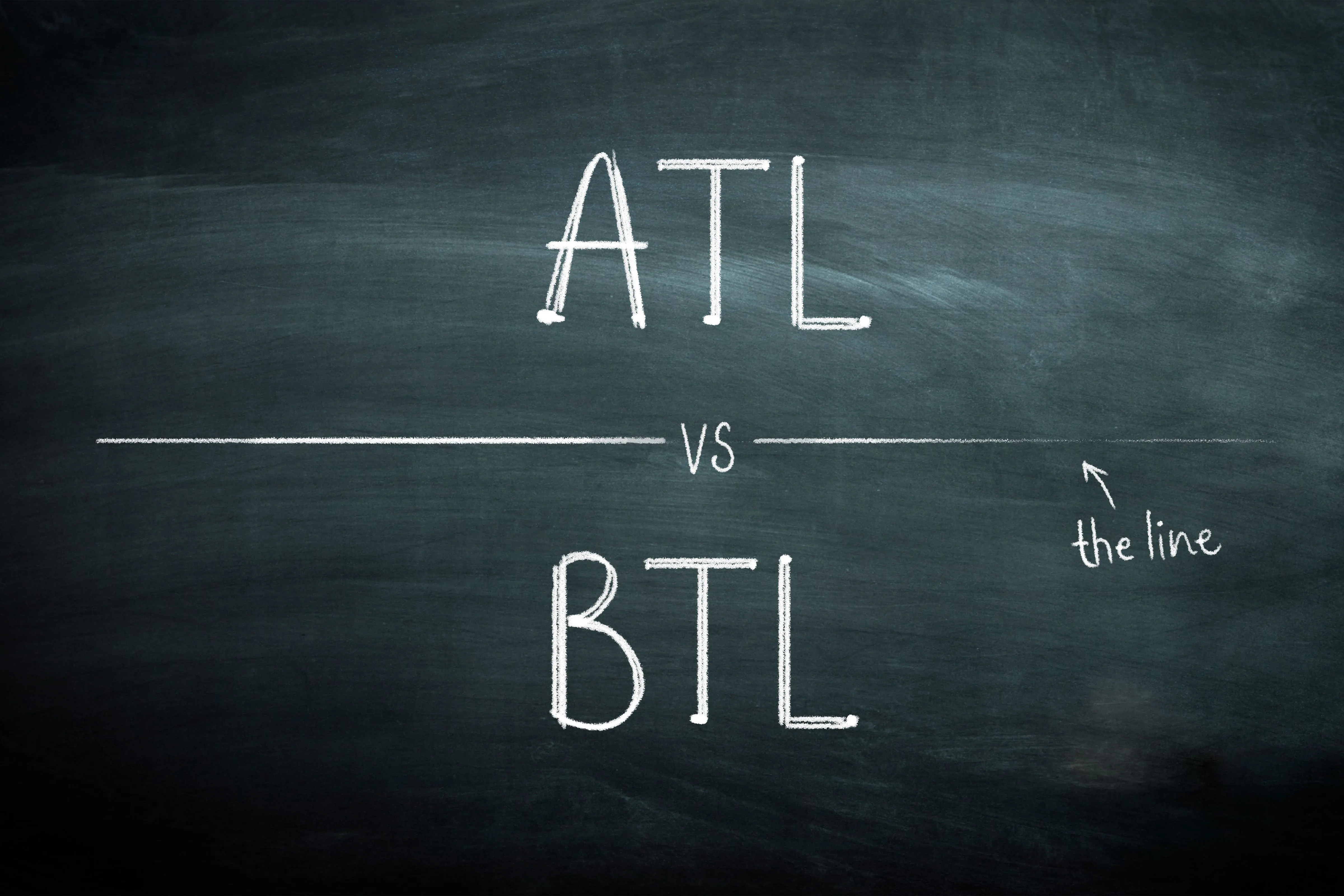Let's dive into the details of each term:
1. Above the Line Marketing (ATL):
ATL marketing involves broader marketing with less targeting and segmentation. Typically utilized by big brands with significant marketing budgets, it employs channels like TV and national newspapers to reach a wide audience. Television, for instance, is considered expensive but has a high reach across the country without specific audience targeting.
ATL marketing aims to maximize reach and create awareness of the product or service among the audience. However, it can be challenging for marketers to measure the campaign's success and whether the goals have been achieved. International brands entering new markets often use ATL marketing to increase brand visibility and basic product knowledge.
2. Below The Line Marketing (BTL):
BTL marketing is the opposite of ATL, employing a more targeted approach to reach the audience based on demographics such as age, gender, income level, lifestyle, or geographic location. The purpose is to make prospects consider the product and eventually make a purchase decision.
Direct response is essential in BTL marketing to gather customer feedback and sentiments about the brand and assess purchase intent. BTL activities can include telemarketing, targeted online advertising, kiosk marketing, trade shows, PPC, social media ads, door-to-door campaigns, roadshows, and more. Measuring BTL campaigns involves metrics like CTRs, open rates, site visits, impressions, and engagements.
3. Through the Line Marketing (TTL):
TTL marketing is a blend of both ATL and BTL marketing and is relatively new. It can be conducted on a massive scale like ATL while also eliciting a response from the audience like BTL. Digital marketing frequently employs TTL strategies, such as video ads on YouTube with a call to action or TV commercials with a message of a specific deal and a call to action to visit a specific outlet.
TTL marketing requires a response from a large audience, encompassing aspects of both ATL and BTL strategies.
In conclusion, the choice of marketing activity depends on your marketing goals. ATL marketing reaches a larger audience but is relatively more expensive. It can yield increased sales, awareness, and brand recognition. BTL marketing is cost-effective but may result in missing potential customers due to lower awareness. However, it allows for personalized communication and can lead to more loyal customers in the long run.
Ultimately, your marketing strategy should consider factors such as the type of market, brand strength, customer journey, audience needs, and pain points to select the most relevant approach.



